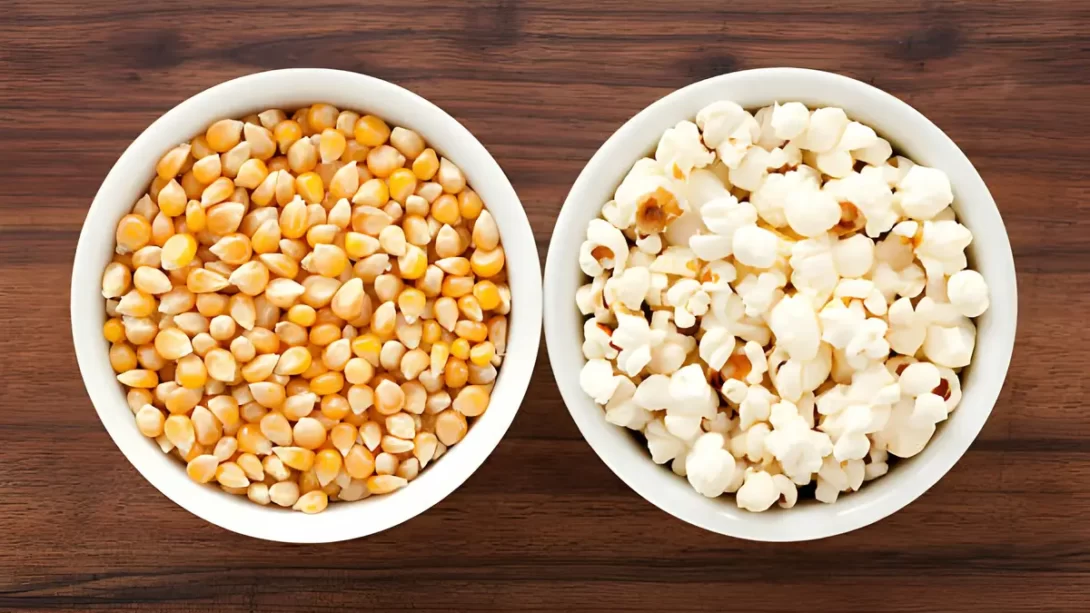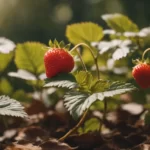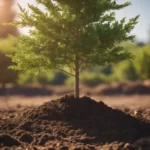Popcorn, a universally loved snack, owes its delightful “pop” to a special type of corn. Not all corn can transform into the light, fluffy kernels we enjoy at movie theaters or cozy nights at home. In this article, we delve into the world of popcorn, exploring the specific type of corn used and what sets it apart from other corn varieties.
The Basics of Popcorn
Popcorn is a unique type of corn kernel that puffs up when heated. The magic behind this transformation lies in the kernel’s structure. Each popcorn kernel has a hard, moisture-sealed hull and a dense, starchy interior. When heated, the moisture inside turns to steam, building pressure until the kernel explodes, turning inside out. This process creates the airy, crunchy texture we know and love.
Types of Corn
Dent Corn
Dent Corn, characterized by the indentation on its kernel’s crown, is primarily used for animal feed and industrial purposes. While it’s a common corn variety, it lacks the necessary properties for popping, such as the hard outer shell and the right moisture content inside the kernel, making it unsuitable for popcorn.
Flint Corn
Flint Corn, often recognized by its colorful kernels, has a hard outer shell and is used in various culinary applications. However, its use in popcorn production is limited. While it has a harder outer shell than Dent Corn, it doesn’t have the right internal structure to pop effectively.
Sweet Corn
Sweet Corn, a favorite for eating on the cob, is harvested when the kernels are tender and high in sugar. This type of corn, however, is not used for popcorn due to its soft kernel structure and moisture content, which are not conducive to popping.
Popcorn (Zea mays everta)
Popcorn is a specific type of flint corn known scientifically as Zea mays everta. This variety is the only type of corn that pops. It features kernels with extremely hard outer shells and a dense, starchy interior. The unique combination of a tough hull and a moisture-rich center is what allows Zea mays everta to pop when heated. This variety of corn has been cultivated and enjoyed for thousands of years, with evidence of popcorn consumption dating back millennia.
Popcorn Varieties
Yellow Popcorn
Yellow Popcorn is the most common variety found in grocery stores. It’s known for its large, fluffy kernels after popping. This variety tends to have a slight nutty flavor and is often used in commercial popcorn production due to its appealing texture and consistency.
White Popcorn
White Popcorn is another popular variety. It pops into smaller, tender kernels and is known for its delicate flavor. Compared to Yellow Popcorn, it has a softer and less crunchy texture, making it a favorite for those who prefer a subtler popcorn experience.
Other Varieties
In addition to Yellow and White Popcorn, there are other, less common varieties such as Blue, Red, and Rainbow Popcorn. These varieties, often heirloom types, offer different flavors and popping characteristics. Blue Popcorn, for instance, pops into smaller and denser kernels, while Rainbow Popcorn, a mix of different colored kernels, offers a variety of textures and flavors.
Cultivation and Harvesting of Popcorn
The cultivation of Zea mays everta is similar to other corn types, but with specific attention to the harvesting time and drying process. Popcorn is typically harvested when the kernels have hardened and the moisture content inside is optimal, usually around 14-20%. After harvesting, the kernels are dried until they reach a moisture content of about 13-14%, ideal for popping. This careful drying process is crucial, as the right moisture level is essential for creating the steam that causes the kernels to explode and turn inside out.
From Kernel to Popped Corn
Turning popcorn kernels into the puffed snack involves heating them until the pressure inside the kernel builds up enough to burst. This can be done in a popcorn machine, a stovetop pan, a microwave, or even an air popper. The key to perfect popcorn is even heat distribution, which ensures that most kernels pop and none burn. The ideal popping temperature is around 400-460 degrees Fahrenheit. The moisture trapped inside the kernel turns into steam, causing the kernel to explode and the starchy inside to expand and cool into the familiar popcorn shape.
Conclusion
Popcorn, specifically Zea mays everta, stands out in the corn family for its unique popping ability. From the common Yellow and White varieties to the more exotic Blue and Rainbow, each type offers a distinct popping experience and flavor profile. Understanding the cultivation, harvesting, and popping process of popcorn adds an extra layer of appreciation to this beloved snack. Whether enjoyed at a movie theater, at a fair, or cozily at home, popcorn continues to be a snack that delights people of all ages, combining simple agricultural science with culinary enjoyment.




